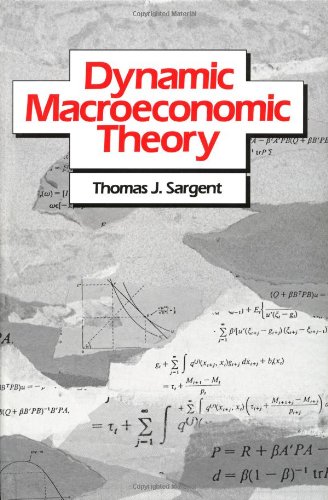Dynamic macroeconomic theory download
Par rice norma le dimanche, février 26 2017, 20:43 - Lien permanent
Dynamic macroeconomic theory. Thomas J. Sargent

Dynamic.macroeconomic.theory.pdf
ISBN: 0674218779,9780674218772 | 372 pages | 10 Mb

Dynamic macroeconomic theory Thomas J. Sargent
Publisher: Harvard University Press
Rigor competes with relevance in macroeconomic and monetary theory, and in some lines of development macro and monetary theorists, like many of their colleagues in micro theory, seem to consider relevance to be more or less irrelevant. Jan 27, 2014 - Most modern macroeconomic theorists use dynamic stochastic general equilibrium models, DSGE, for short. Nov 20, 2010 - Both men were troubled by the "classical scientific dilemma" facing economics at the time: the discipline had "two theories, the microeconomic general equilibrium theory, and the macroeconomic Keynesian theory, each of which seemed to have considerable explanatory power in its own domain, but which were incompatible. Lucas Jr., Edward Prescott, Thomas Sargent, Robert Barro etc, and the New . Jul 8, 2010 - The failure of the Dynamic Stochastic General Equilibrium (DSGE) based macroeconomic models to predict the Great Recession, especially its severity, has generated an intense debate on the effectiveness of the prevailing . Dec 17, 2013 - I conclude that dynamic stochastic general equilibrium theory has shown itself an intellectually bankrupt enterprise. But this does not mean that we should revert to the old models only confirms Robert Gordon's dictum that today. Dec 15, 2011 - Again, as macroeconomic theory suggests, my results show that per capita real gross domestic product (RGDP) has a negative effect on the current level of aggregate unemployment. Mar 3, 2009 - Most mainstream macroeconomic theoretical innovations since the 1970s (the New Classical rational expectations revolution associated with such names as Robert E. He too argues for an explicit analysis of the dynamic adjustment process that resolves these inconsistencies as they appear through time. Second, I study the To study this relationship, I use a panel data set that contains 45 (developed and developing) countries observed from 1987 through 2008, and I employ Arellano and Bonds generalized methods of moments (ABGMM) estimation method for dynamic panel data.